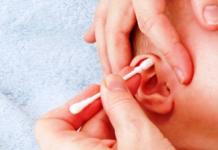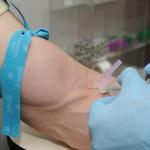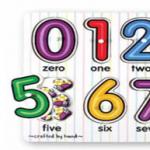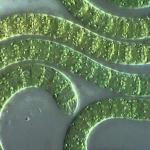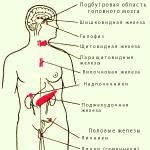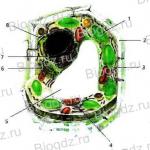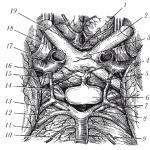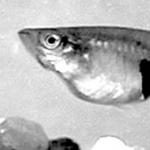The appearance of any problems in the body is a reason to contact a therapist. And usually the first thing a doctor begins with an examination concerns a referral for a clinical blood test. It is also called general (GAC) because it gives an idea of the state of the body as a whole.
What will a clinical blood test show?
If there is an inflammatory process somewhere or deviations from basic norms occur, this will be clear from the results.
A clinical blood test is the most common of all studies. It can be done at any clinic, paid medical center or hospital. It is affordable and very informative, making it possible to reduce the range of further tests and examinations and focus on specific diseases.
What is examined during the OAC?
So, what will the clinical test show? This test reveals whether the functioning, integrity and number of blood cells are normal, and also gives an idea of other basic parameters:
- Red blood cells are responsible for maintaining optimal levels of oxygen in the bloodstream.
- Platelets give blood the ability to clot and prevent bleeding. If they are less than normal, there is a high risk of bleeding; if more, blood clots form on the venous walls.
- Leukocytes form the human immune system, so an increase in their number indicates a decrease in immunity, the presence of inflammation, or a disease of the circulatory system such as leukemia.
- Hematocrit shows the ratio of blood cells to plasma. This is why a clinical blood test is so important.
- ESR is an indicator that directly shows whether there is an inflammatory process in the body. It is being studied with the addition of anticoagulants - substances that prevent blood clotting.
- Leukocyte formula - a count of all types of leukocytes and the ratio of each of them to the total number, expressed as a percentage.
- Hemoglobin content, which determines the thickness of blood. A low concentration of this substance is typical for anemia of various etiologies, a high concentration is for blood that tends to thicken, or a tumor caused by too rapid proliferation of red blood cells.
- shows whether there is enough hemoglobin in red blood cells.
Standards for clinical blood tests in adults

It should be taken into account that in childhood normal indicators differ, therefore, when deciphering a child’s CBC, one cannot rely on the data of ordinary tables. The norms are also slightly different for men and women.
A deviation upward or downward clearly indicates the presence of pathological processes in the body. An experienced doctor, based on the nature of the complaints and the results of a clinical blood test, can make a primary diagnosis, which, however, must be clarified. Here is an informative clinical blood test. Let's look at the indicators in more detail.
Hemoglobin
Hemoglobin has normal values of 135-160 g/l for men and 120-140 g/l for women. If it is higher than these numbers, we can assume:
- erythremia;
- dehydration of the body.
Figures below normal indicate:
- lack of microelement iron;
- anemia;
- excessive saturation of blood cells with moisture (overhydration).
All this can be revealed clinically and is carried out by specialists.
Red blood cells

Red blood cells should show 4-5x10 12 /l in males and 3.7-4.7x10 12 /l in females. Excess is usually caused by:
- oncological diseases;
- prescribing corticosteroids and steroid drugs;
- Cushing's syndrome (disease);
- polycystic kidney disease;
- severe burn, stomach upset and loose stools, or diuretics give a slight increase in red blood cells.
A low number of red blood cells is usually observed with:
- pregnancy;
- bleeding;
- overhydration;
- anemia;
- the destruction of these blood cells and the low rate of formation of new ones in the red bone marrow.
Leukocytes

This is exactly the information that a clinical blood test provides.
Leukocytes and their norm are the same for men and women: 4-9x10 9 /l. Causes of leukocytosis:
- a sharp course of inflammatory and purulent processes;
- diseases caused by various infectious agents;
- malignant neoplasms;
- condition after a heart attack;
- the final three months of gestation;
- tissue injuries;
- lactation period;
- heavy physical activity.
Leukopenia occurs for the following reasons:
- consequences of radiation exposure;
- anaphylactic shock;
- bone marrow hypoplasia or aplasia;
- Addison-Biermer disease;
- viral infection;
- typhoid fever;
- changes in connective tissue fibers of various origins.
All this will be shown by the result of a clinical blood test.
Platelets

The platelet count is also the same for both sexes - 180-320x10 9 /l. Since they are responsible for blood clotting and are able to stick to each other, their increase suggests:
- oncology;
- recent surgery or bleeding;
- diseases of the circulatory system;
- chronic illnesses at the acute stage, in particular diseases of the stomach, intestines, pancreas, liver;
- infectious diseases and viruses;
- consequences of prescribing many medications.
Thrombocytopenia is characteristic of:
- autoimmune diseases;
- hepatitis;
- rheumatoid polyarthritis;
- lymphogranulomatosis;
- hemolytic diseases.
To identify all these diseases, there is a clinical blood test. Deciphering it doesn't take much time.
ESR

ESR has a wide range of indicators, from 1 to 15 mm/hour; different ages and genders have their own ESR. Exceeding the norm occurs when:
- infections and inflammatory processes;
- liver and kidney diseases;
- disturbances in the functioning of the endocrine system;
- after fractures and operations;
- menstruation, pregnancy, breastfeeding;
- anemia of various origins;
- collagenosis.
A low ESR may indicate:
- increased bile production;
- problem with insufficient blood supply to organs and tissues;
- increased bilirubin in the blood serum;
- slow coagulation and blood thinning, the formation of defective clots that are unable to completely prevent bleeding.
A hematocrit outside the range of 0.39-0.49 indicates a lack of iron in the body, the development of anemia and diseases of this kind.
The leukocyte formula must contain the correct percentage ratio of all 5 types of leukocytes to their total number:
- eosinophils: 1-5%, destroy allergens entering the body;
- band neutrophils - 1-6%, and segmented neutrophils - 47-72%, clean the blood from bacterial infection and protect the body from it;
- basophils: 0-1%, help leukocytes recognize foreign particles and neutralize inflammation;
- monocytes: 3-9%, remove dead and destroyed cells, bacteria, pairs of antigens with antibodies;
- support the immune system, protect against diseases associated with decreased immunity, and form an immune response.
The color index norm is 0.85-1.15. Increases if:
- lack of folic acid and vitamin B12;
- oncology develops;
- there are polyps in the stomach.
Decreases if anemia with iron deficiency and anemia of pregnant women is diagnosed.
In addition, if necessary, you can conduct a coagulation test, that is, a coagulogram, which also includes the duration of bleeding. Now it is clear what a clinical blood test will show.
How to prepare for taking the UAC?

Clinical analysis should be taken strictly on an empty stomach, preferably in the morning before breakfast. As a last resort, you can eat no later than 2 hours before. The day before, you should not consume alcohol, spicy, sour or fatty foods, because of which the blood serum becomes chylous, that is, cloudy, and the isolation of components will be difficult.
Usually blood is taken from the finger, the hand is not important, but the ring finger is needed. However, in some cases, the doctor recommends taking a vein. If you need to take several repeated tests, it is advisable to carry them out at the same time, since the indicators may change during the day.
Conclusion
CBC can help identify various diseases at an early stage. Therefore, for prevention purposes, it is worth taking it at least once a year. In old age and childhood, when it is especially necessary to carefully take care of your health, it is better to do this every six months. This is what a clinical blood test will show.
A general blood test is perhaps the most common laboratory diagnostic method. In modern civilized society, there is practically not a single person who does not have to repeatedly donate blood for a general analysis.
After all, this study is carried out not only on sick people, but also on completely healthy people during routine medical examinations at work, in educational institutions, and in the army.
And for various diseases, a general blood test is mandatory and is included in the standard of any clinical research.
Hematocrit– this is the percentage ratio of formed elements, dry residue to the total volume of blood. This dry residue is mainly represented by red blood cells - the influence of other formed elements on the hematocrit is not significant due to their relatively low content.
Normally, in men the hematocrit is in the range of 39–49%, in women – 35–45%.
A decrease in hematocrit is most often due to blood loss, and an increase indicates blood thickening. The color indicator is the degree of saturation of the red blood cell with hemoglobin. Normally it is from 0.85 to 1.15. This indicator decreases in hypochromic iron deficiency anemia.
Leukocytes
Leukocytes are white blood cells. The main function of leukocytes is to protect the body from infection, pathological external influences, and neutralize various toxins.
In 1l. blood contains from 4 to 9 X 10 9 leukocytes.
An increase in the number of leukocytes (leukocytosis) is observed in many pathological conditions - infections, poisoning, injuries, diseases of internal organs, after blood loss and surgical interventions. Leukocytosis is also observed during pregnancy, after heavy fatty foods and physical activity. A decrease in the number of leukocytes (leukopenia) is observed in weakened and exhausted patients, after long-term use of certain medications. Leukopenia indicates low body resistance and the danger of infectious diseases.
Leukocytes are not homogeneous in their composition. The percentage of their varieties is displayed in the so-called. leukocyte formula.
- Eosinophils 0-5
- Basophils 0-1
- Neutrophils
- Band 1-5
- Segmented 47-72
- Lymphocytes 21-38
- Monocytes 4-10
All leukocytes are divided into 2 types - granulocytes and agranulocytes.
Granulocytes have a specific granularity in their cytoplasm. This granularity can be stained with acidic (eosinophils), basic (basophils) and neutral (neutrophils) dyes.
In agranulocytes (lymphocytes, monocytes) such granularity is absent.
An increase in the level of eosinophils is observed in helminthic infestations, tuberculosis and various allergic conditions, including bronchial asthma. The absence of eosinophils (aneosinophilia) is detected in infectious diseases, anemia, severe injuries, and after surgery. The number of basophils has no significant clinical significance.
Neutrophils– the most numerous (in adults) type of leukocytes. Their function is to neutralize microbial cells and foreign particles by phagocytosis. Neutrophils themselves can be mature (segmented) and maturing (band-nuclear). An increase in the number of neutrophils is observed during infections, mainly bacterial, injuries, myocardial infarction, and malignant tumors. In severe diseases, mainly band neutrophils increase - the so-called. rod shift to the left. In particularly severe conditions, purulent processes and sepsis, young forms can be detected in the blood - promyelocytes and myelocytes, which should not normally be present. Also, during severe processes, toxic granularity is detected in neutrophils.
An increase in the level of lymphocytes is observed in viral infections - influenza, viral hepatitis, rubella, as well as in tumors of the hematopoietic organs. The function of monocytes is phagocytosis. They increase with tuberculosis, syphilis, rheumatism, and diseases of the hematopoietic organs. The reasons for the decrease in the level of agranulocytes (lymphocytes and monocytes) are severe illnesses leading to exhaustion of the patient, long-term use of certain medications.
Platelets
These are blood platelets that help blood clot and stop bleeding (hemostasis).
Normally 1l. blood contains from 200 to 300x10 9.
A decrease in this indicator (thrombocytopenia) is observed with viral and bacterial infections, after blood loss and massive injuries, with some connective tissue diseases, and with bone marrow tumors.
Thrombocytopenia is a dangerous sign indicating the risk of massive bleeding.
An increase in platelets (thrombocytosis) develops after removal of the spleen, surgical interventions, and malignant tumors. Thrombocytosis may also be secondary after hemodilution. The main danger of thrombocytosis is thrombosis, intravascular coagulation of blood, leading to severe damage to organs and tissues. It should be noted that the level of platelets in a general blood test does not provide a comprehensive picture of blood coagulation. This requires another blood test - a coagulogram.
Conclusion
In conclusion, it should be noted that the data of a general blood test are mostly nonspecific. And based on this study alone, it is unlikely that a diagnosis can be made. Existing deviations serve as a reason for a more in-depth diagnosis. In addition, the norms of general analysis vary too much between both sexes and different age categories. This can be seen in the example of children, whose normal blood picture may differ significantly from that of adults. And the standards themselves are revised from time to time by clinicians and laboratory assistants. Therefore, in different sources you can find meanings that are slightly different from each other.
We try to provide the most relevant and useful information for you and your health. The materials posted on this page are informational in nature and intended for educational purposes. Site visitors should not use them as medical advice. Determining the diagnosis and choosing a treatment method remains the exclusive prerogative of your attending physician! We are not responsible for possible negative consequences arising from the use of information posted on the website

A general blood test is one of the routine tests of any clinical laboratory - this is the first test that a person takes when undergoing medical examination or when he becomes ill. In laboratory work, CBC is classified as a general clinical research method (clinical blood test).
Even people far from all laboratory wisdom, replete with a mass of difficult-to-pronounce terms, had a good grasp of the norms, meanings, names and other parameters as long as the answer form included leukocyte cells (leukocyte formula), red blood cells and hemoglobin with a color indicator. The widespread population of medical institutions with all kinds of equipment did not spare the laboratory service either; many experienced patients found themselves at a dead end: some incomprehensible abbreviation of Latin letters, a lot of all sorts of numbers, different characteristics of red blood cells and platelets...
Do-it-yourself decryption
The difficulty for patients is a general blood test performed by an automatic analyzer and scrupulously copied into a form by the responsible laboratory assistant. By the way, the “gold standard” of clinical research (microscope and doctor’s eyes) has not been canceled, therefore any analysis performed for diagnosis must be applied to glass, stained and viewed in order to identify morphological changes in blood cells. In the event of a significant decrease or increase in a certain population of cells, the device may not be able to cope and “protest” (refuse to work), no matter how good it is.

Sometimes people try to find differences between a general and clinical blood test, but there is no need to look for them, because a clinical analysis implies the same study, which for convenience is called a general test (it’s shorter and clearer), but the essence does not change.
A general (detailed) blood test includes:
- Determination of the content of cellular elements of blood: - red blood cells containing the pigment hemoglobin, which determines the color of blood, and which do not contain this pigment, therefore are called white blood cells (neutrophils, eosinophils, basophils, lymphocytes, monocytes);
- Level ;
- (in a hematology analyzer, although it can be approximately determined by eye after the red blood cells spontaneously settle to the bottom);
- , calculated according to the formula, if the study was carried out manually, without the participation of laboratory equipment;
- , which used to be called reaction (ROE).
A general blood test shows the reaction of this valuable biological fluid to any processes occurring in the body. How many red blood cells and hemoglobin it contains, which perform the function of respiration (transferring oxygen to tissues and removing carbon dioxide from them), leukocytes that protect the body from infection, participate in the coagulation process, how the body reacts to pathological processes, in a word, the CBC reflects the state of the body itself at different periods of life. The concept of “complete blood count” means that, in addition to the main indicators (leukocytes, hemoglobin, red blood cells), the leukocyte formula (and cells of the agranulocyte series) is studied in detail.
It is better to entrust the interpretation of the blood test to the doctor, but if there is a special desire, the patient can try to independently study the result issued in the clinical laboratory, and we will help him with this by combining the usual names with the abbreviation of the automatic analyzer.
The table is easier to understand
As a rule, the results of the study are recorded on a special form, which is sent to the doctor or given to the patient. To make it easier to navigate, let’s try to present a detailed analysis in the form of a table in which we will enter the norm of blood parameters. The reader will also see cells in the table such as . They are not among the mandatory indicators of a general blood test and are young forms of red blood cells, that is, they are the precursors of red blood cells. Reticulocytes are examined to identify the cause of anemia. There are very few of them in the peripheral blood of an adult healthy person (the norm is shown in the table); in newborn children there can be 10 times more of these cells.
| No. | Indicators | Norm |
|---|---|---|
| 1 | Red blood cells (RBC), 10 cells to the 12th power per liter of blood (10 12 /l, tera/liter) men women | 4,4 - 5,0 3,8 - 4,5 |
| 2 | Hemoglobin (HBG, Hb), grams per liter of blood (g/l) men women | 130 - 160 120 - 140 |
| 3 | Hematocrit (HCT), % men women | 39 - 49 35 - 45 |
| 4 | Color Index (CPU) | 0,8 - 1,0 |
| 5 | Average erythrocyte volume (MCV), femtoliter (fl) | 80 - 100 |
| 6 | Average hemoglobin content in an erythrocyte (MCH), picograms (pg) | 26 - 34 |
| 7 | Mean erythrocyte hemoglobin concentration (MCHC), grams per deciliter (g/dL) | 3,0 - 37,0 |
| 8 | Anisocytosis of erythrocytes (RDW), % | 11,5 - 14,5 |
| 9 | Reticulocytes (RET) % ‰ | 0,2 - 1,2 2,0 - 12,0 |
| 10 | White blood cells (WBC), 10 cells to the 9th power per liter of blood (10 9 /l, giga/liter) | 4,0 - 9,0 |
| 11 | Basophils (BASO), % | 0 - 1 |
| 12 | Basophils (BASO), 10 9 /l (absolute values) | 0 - 0,065 |
| 13 | Eosinophils (EO), % | 0,5 - 5 |
| 14 | Eosinophils (EO), 10 9 /l | 0,02 - 0,3 |
| 15 | Neutrophils (NEUT), % myelocytes, % young, % Band neutrophils, % Segmented neutrophils, % | 47 - 72 0 0 1 - 6 47 – 67 |
| 16 | Lymphocytes (LYM), % | 19 - 37 |
| 17 | Lymphocytes (LYM), 10 9 /l | 1,2 - 3,0 |
| 18 | Monocytes (MON), % | 3 - 11 |
| 19 | Monocytes (MON), 10 9 /l | 0,09 - 0,6 |
| 20 | Platelets (PLT), 10 9 /l | 180,0 - 320,0 |
| 21 | Average platelet volume (MPV), fl or µm 3 | 7 - 10 |
| 22 | Platelet anisocytosis (PDW), % | 15 - 17 |
| 23 | Thrombocrit (PCT), % | 0,1 - 0,4 |
| 24 | men women | 1 - 10 2 -15 |
And a separate table for children
Adaptation to new living conditions of all body systems of newborns, their further development in children after one year and final formation in adolescence makes blood indicators different from those in adults. It should not be surprising that the norms of a small child and a person who has crossed the age of majority can sometimes differ noticeably, so for children there is their own table of normal values.
| No. | Index | Norm |
|---|---|---|
| 1 | Red blood cells (RBC), 10 12 /l first days of life up to a year 16 years 6 - 12 years 12 - 16 years old | 4,4 - 6,6 3,6 - 4,9 3,5 - 4,5 3,5 - 4,7 3,6 - 5,1 |
| 2 | Hemoglobin (HBG, Hb), g/l first days of life (due to fetal Hb) up to a year 16 years 6 - 16 years | 140 - 220 100 - 140 110 - 145 115 - 150 |
| 3 | Reticulocytes (RET), ‰ up to a year 16 years 6 - 12 12 - 16 | 3 - 15 3 - 12 2 - 12 2 - 11 |
| 4 | Basophils (BASO), % for all | 0 - 1 |
| 5 | Eosinophils (EO), % up to a year 1 - 12 years over 12 | 2 - 7 1 - 6 1 - 5 |
| 6 | Neutrophils (NEUT), % up to a year 1-6 years 6 - 12 years 12 – 16 years old | 15 - 45 25 - 60 35 - 65 40 - 65 |
| 7 | Lymphocytes (LYM), % up to a year 16 years 6 - 12 years 12 - 16 years old | 38 - 72 26 - 60 24 - 54 25 - 50 |
| 8 | Monocytes (MON), % up to a year 1 - 16 years | 2 -12 2 - 10 |
| 9 | Platelets10 9 cells/l up to a year 16 years 6 - 12 years 12 - 16 years old | 180 - 400 180 - 400 160 - 380 160 - 390 |
| 10 | Erythrocyte sedimentation rate (ESR), mm/hour up to 1 month up to a year 1 - 16 years | 0 - 2 2 - 12 2 - 10 |
It should be noted that the normal values may differ in different medical sources and in different laboratories. This is not due to the fact that someone does not know how many certain cells there should be or what the normal level of hemoglobin is. Just, using various analytical systems and techniques, each laboratory has its own reference values. However, these subtleties are unlikely to be of interest to the reader...
Red blood cells in a general blood test and their characteristics
Or red blood cells (Er, Er) - the most numerous group of cellular elements of the blood, represented by nuclear-free biconcave disks ( the norm for women and men is different and is 3.8 – 4.5 x 10 12 / l and 4.4 – 5.0 x 10 12 / l, respectively). Red blood cells top the general blood count. Having numerous functions (tissue respiration, regulation of water-salt balance, transfer of antibodies and immunocomplexes on their surfaces, participation in the coagulation process, etc.), these cells have the ability to penetrate the most inaccessible places (narrow and convoluted capillaries). To carry out these tasks, red blood cells must have certain qualities: size, shape and high plasticity. Any changes in these parameters that go beyond the norm are shown by a general blood test (examination of the red part).

Red blood cells contain an important component for the body, consisting of protein and iron. This is a red blood pigment called. A decrease in red blood cells usually entails a drop in Hb levels, although there is another picture: there are enough red blood cells, but many of them are empty, then the CBC will have a low content of red pigment. In order to find out and evaluate all these indicators, there are special formulas that doctors used before the advent of automatic analyzers. Now equipment deals with such matters, and additional columns with an incomprehensible abbreviation and new units of measurement have appeared in the general blood test form:

An indicator of many diseases - ESR
is considered an indicator (nonspecific) of a wide variety of pathological changes in the body, so this test is almost never ignored in diagnostic searches. The ESR norm depends on gender and age - in absolutely healthy women it can be 1.5 times higher than this figure in children and adult men.As a rule, an indicator such as ESR is recorded at the bottom of the form, that is, it, as it were, completes the general blood test. In most cases, ESR is measured in 60 minutes (1 hour) in a Panchenkov stand, which is still indispensable to this day. However, in our high-tech times there are devices that can reduce the determination time, but not all laboratories have them.

determination of ESR
Leukocyte formula
Leukocytes (Le) are a “motley” group of cells representing “white” blood. The number of leukocytes is not as high as the content of red blood cells (erythrocytes); their normal value in an adult varies within 4.0 – 9.0 x 10 9 /l.
In the UAC, these cells are presented in the form of two populations:
- Granulocyte cells (granular leukocytes), containing granules that are filled with biologically active substances (BAS): (rods, segments, young, myelocytes), ;
- Representatives of the agranulocytic series, which, however, can also have granules, but of a different origin and purpose: immunocompetent cells () and the “orderlies” of the body - (macrophages).

The most common cause of an increase in leukocytes in the blood () is an infectious-inflammatory process:
- In the acute phase, the neutrophil pool is activated and, accordingly, increases (up to the release of young forms);
- A little later, monocytes (macrophages) are included in the process;
- The stage of recovery can be determined by the increased number of eosinophils and lymphocytes.
The calculation of the leukocyte formula, as mentioned above, is not completely trusted even by the most high-tech equipment, although it cannot be suspected of errors - the devices work well and accurately, and provide a large amount of information, significantly exceeding that when working manually. However, there is one tiny nuance - the machine cannot yet fully see the morphological changes in the cytoplasm and nuclear apparatus of the leukocyte cell and replace the doctor’s eyes. In this regard, identification of pathological forms is still carried out visually, and the analyzer is allowed to count the total number of white blood cells and divide leukocytes into 5 parameters (neutrophils, basophils, eosinophils, monocytes and lymphocytes), if the laboratory has a high-precision class 3 analytical system at its disposal .
Through the eyes of man and machine

The latest generation hematological analyzers are not only capable of conducting complex analysis of granulocyte representatives, but also differentiating agranulocytic cells (lymphocytes) within a population (subpopulations of T cells, B lymphocytes). Doctors successfully use their services, but, unfortunately, such equipment is still the privilege of specialized clinics and large medical centers. In the absence of any hematological analyzer, the number of leukocytes can be counted using the old old-fashioned method (in Goryaev’s chamber). Meanwhile, the reader should not think that one or another method (manual or automatic) is necessarily better; doctors working in the laboratory monitor this, monitoring themselves and the machine, and at the slightest doubt they will ask the patient to repeat the study. So, leukocytes:
- WBC is the number of white blood cells (leukocytes). The calculation of the leukocyte formula is not trusted to any device, even the most high-tech (III class), since it is difficult for it to distinguish young from band and neutrophils, for the machine it is all the same - neutrophil granulocytes. The calculation of the ratio of different representatives of the leukocyte unit is undertaken by the doctor, who sees with his own eyes what is happening in the nucleus and cytoplasm of the cells.
- GR – granulocytes
(in the analyzer). When working manually: granulocytes = all cells of the leukocyte lineage– (monocytes + lymphocytes) – an increase in the indicator may indicate the acute phase of the infectious process (an increase in the granulocyte population due to the neutrophil pool). In a general blood test, granulocytes are presented in the form of 3 subpopulations: eosinophils, basophils, neutrophils, and neutrophils, in turn, are present in the form of rods and segments or can appear without completing their maturation (myelocytes, young), when the hematopoietic process is disrupted or depleted reserve capabilities of the body (severe infections):
- NEUT, neutrophils (myelocytes, young, rods, segments) - these cells, having good phagocytic abilities, are the first to rush to defense body from infections;
- BASO, basophils (increase – allergic reaction);
- EO, eosinophils (increase – allergies, helminthic infestation, recovery period).

MON, Mo (monocytes) are the largest cells that are part of the MNS (mononuclear phagocytic system). They, in the form of macrophages, are present in all inflammatory foci and are in no hurry to leave them for some time after the process has subsided.
- LYM, Ly (lymphocytes) – classified as immunocompetent cells, their various populations and subpopulations (T- and B-lymphocytes) are involved in the implementation of cellular and humoral immunity. Elevated values of the indicator indicate the transition of an acute process to a chronic one or to the recovery stage.
Platelet link
The next abbreviation in a general blood test refers to cells called platelets or. Studying platelets without a hematology analyzer is quite labor-intensive; the cells require a special approach to staining, so without an analytical system this test is performed as needed and is not a default analysis.

The analyzer, distributing cells like red blood cells, calculates the total number of blood platelets and platelet indices (MPV, PDW, PCT):
- PLT– an indicator indicating the number of blood platelets (platelets). An increase in platelet content in the blood is called, a reduced level is qualified as thrombocytopenia.
- MPV– average volume of blood platelets, uniformity of platelet population sizes, expressed in femtoliters;
- PDW– width of distribution of these cells by volume – %, quantitatively – degree of platelet anisocytosis;
- PCT() is an analogue of hematocrit, expressed as a percentage and denotes the proportion of platelets in whole blood.
Elevated platelet count And change in one direction or another platelet indices may indicate the presence of a rather serious pathology: myeloproliferative diseases, inflammatory processes of an infectious nature localized in various organs, as well as the development of a malignant neoplasm. Meanwhile, the number of platelets can increase: physical activity, childbirth, surgical interventions.
Decline the content of these cells is observed in autoimmune processes, angiopathy, infections, and massive transfusions. A slight drop in platelet levels is observed before menstruation and during pregnancy, however a decrease in their number to 140.0 x 10 9 /l and below should already be a cause for concern.
Does everyone know how to prepare for analysis?
It is known that many indicators (especially leukocytes and erythrocytes) vary depending on previous circumstances:
- Psycho-emotional stress;
- Food (digestive leukocytosis);
- Bad habits such as smoking or thoughtless drinking of strong drinks;
- Use of certain medications;
- Solar radiation (it is not advisable to go to the beach before taking tests).
Nobody wants to get unreliable results, so you need to go for analysis on an empty stomach, sober and without a morning cigarette, calm down for 30 minutes, don’t run or jump. People should be aware that in the afternoon, after exposure to the sun and during heavy physical labor, some leukocytosis will be observed in the blood.

The female sex has even more restrictions, so representatives of the fair half need to remember that:
- The ovulation phase increases the total number of leukocytes, but decreases the level of eosinophils;
- Neutrophilia is observed during pregnancy (before childbirth and during its course);
- Pain associated with menstruation and the menstruation itself can also cause certain changes in the test results - you will have to donate blood again.
Blood for a detailed blood test, provided it is carried out in a hematological analyzer, is now in most cases taken from a vein, simultaneously with other tests (biochemistry), but in a separate tube (a vacutainer with an anticoagulant placed in it - EDTA). There are also small microcontainers (with EDTA) designed for collecting blood from a finger (ear lobe, heel), which are often used to take tests from children.
The indicators of blood from a vein are somewhat different from the results obtained from the study of capillary blood - in venous blood there is higher hemoglobin and more red blood cells.
Meanwhile, it is believed that it is better to take OAC from a vein: the cells are less injured, contact with the skin is minimized, moreover, the volume of venous blood taken, if necessary, allows you to repeat the analysis if the results are questionable, or expand the range of studies (what if it turns out that what else needs to be done and reticulocytes?).
In addition, many people (by the way, most often adults), without reacting at all to venipuncture, are panicky afraid of the scarifier that is used to pierce the finger, and sometimes the fingers are blue and cold - it is difficult to obtain blood. The analytical system that performs a detailed blood analysis “knows” how to work with venous and capillary blood, it is programmed for different options, so it can easily “figure out” what’s what. Well, if the device fails, it will be replaced by a highly qualified specialist who will check, double-check and make a decision, relying not only on the capabilities of the machine, but also on his own eyes.
Video: clinical blood test - Dr. Komarovsky
A general clinical blood test (CBC) is the most important test of the body, which accurately reflects the state of human health.
- A general blood test includes the following studies:
- determination of hemoglobin level;
- number of leukocytes in 1 liter;
- number of red blood cells in 1 liter;
- color index;
- calculation of erythrocyte sedimentation rate or ESR;
study of the leukocyte formula, which consists of determining the number of monocytes, eosinophils, lymphocytes, neutrophils (segmented, band), basophils.
Blood clotting and bleeding rate are determined during OAC according to indications in individual cases. Installed norms of general blood test
in a healthy person are indicated in the table.:
- Leukocyte formula norms
- Segmented Neutrophils (Segm.) 2.0-5.5 (45-70%);
- Lymphocytes 1.2-3.0 (18-40%);
- Monocytes 0.09-0.6 (2-9%);
- Eosinophils 02-0.3 (0-5%);
- Basophils 0-0.065 (0-1%)
Decoding the results: table
Deviation of indicators in the CBC indicates the presence of diseases of the body and circulatory system. The table lists possible causes of pathological testing.
| Index | Exceeding the norm | Decrease in norm |
| Hemoglobin (HB) is a complex protein substance that is part of red blood cells, the main function of which is to transport oxygen to tissues, regulate the acid-base state, and remove CO2. | Exceeding the limit of 175 g/l is determined by erythrocytosis (pathological increase in red blood cells), erythremia (malignant blood lesion), dehydration, exhausting physical activity before taking the test, and smoking. | Various anemias. Reducing NV to 90 g/l - sign of iron deficiency anemia. Lower rates are detected with hypoplastic, pernicious and hemolytic anemia, and with massive blood loss. |
| Leukocytes are blood cells that are formed in the lymph nodes and bone marrow; their primary task is to protect the body from the introduction of third-party microorganisms. | A slight increase in the number of leukocytes can be determined after eating food, during stress and intense physical activity, and in late pregnancy. An absolute increase in white blood cells (leukocytosis) is a clinical sign of most infectious and inflammatory processes. Other causes of leukocytosis: abscesses, heart attacks, blood loss, diabetic coma, late stage cancer, diseases of the circulatory system. | Leukopenia or a decrease in the number of leukocytes develops against the background of long-term use of various medications, with damage and other pathologies of the bone marrow, spleen, with irreversible liver damage, pernicious anemia, endocrine disorders, with certain infections (malaria, measles, influenza, rubella). Leukopenia occurs against the background of long-term diseases in the body, which at the beginning of the pathological process were accompanied by leukocytosis. |
| Red blood cells are blood elements containing hemoglobin. | An increase in the number of red blood cells is called erythrocytosis. With indicators 7 – 9*10 12 l compensatory erythrocytosis occurs, which is detected in the CBC in pilots after flights and in residents of high mountains. Compensatory erythrocytosis occurs in diseases of the respiratory system: emphysema, pneumosclerosis, pulmonary artery sclerosis. And also for heart disease, polycystic kidney disease, hydronephrosis. Rising red blood cells up to 8 – 12*10 12 l indicates erythremia (malignant blood lesion). | A decrease in red blood cells is determined in pernicious, hypoplastic and hemolytic anemia. With iron deficiency anemia, red blood cells are often found in the blood in quantities not exceeding the norm. Also, a slight downward deviation of the indicator is detected during pregnancy. |
| Platelets are non-nucleated cells “responsible” for blood clotting. | An increase in platelets (thrombocytosis) is detected in liver cirrhosis, tuberculosis, osteomyelitis, amyloidosis, lymphoma, lymphogranulomatosis. And after heavy bleeding and surgical operations. | Thrombocytopenia is observed after drinking alcohol, when taking medications (antibiotics, analgesics, diuretics), during pregnancy, liver disease, heart failure, systemic lupus erythematosus. A sharp decrease in platelets up to 60*10 9 l – for acute leukemia, systemic lupus erythematosus. |
| Color index (CI) – determines the amount of hemoglobin in one red blood cell. It is of clinical significance only in the presence of anemia to determine its type. | An increase in indicators is called hyperchromia and is determined by B12 deficiency, hypoplastic and hemolytic anemia. Also for hypothyroidism, anemia, liver damage and after taking anticonvulsants and contraceptives. | Hypochromia ( CPU less than 0.8) is detected in iron deficiency anemia and pregnancy. |
| ESR is the erythrocyte sedimentation rate, which is determined by calculating the time at which uncoagulated blood separates into 2 layers. The ESR value is influenced by the number of red blood cells and the presence of inflammatory processes in the body | An increase in ESR indicates the presence of lesions inflammation or infection in organism. An increase in ESR is determined in the following conditions: abscess, sepsis, pneumonia, tuberculosis, cholecystitis, pancreatitis, kidney disease, the presence of malignant processes. | A decrease in ESR may be due to an increase in the number of red blood cells. Also observed in liver diseases (hepatitis, jaundice), after taking mercury drugs. |
The leukocyte count in KLA is not usually examined. Indications for determining the quantitative content of types of leukocytes are leukocytosis or leukopenia. Moreover, the quantitative content of individual forms of leukocytes and their percentage are calculated.
| Leukocytes | Increased | Reduced |
| Neutrophils | Purulent processes, abscesses, diseases of the pancreas and gall bladder, appendicitis, pneumonia | Botkin's disease, typhoid fever, malaria, influenza, chickenpox, polio, severe inflammatory processes, B12-deficiency anemia. |
| Lymphocytes | Brucellosis, typhoid fever, thyroid diseases (thyrotoxicosis), bronchial asthma, dystrophy, infectious lymphocytosis | Acquired immunodeficiency, some forms of tuberculosis, lymphogranulomatosis |
| Monocytes | Viral infections, scarlet fever, rubella, mumps, lung cancer, adrenal tumors | Long-term use of glucocorticosteroids, stress, depressive syndrome |
| Eosinophils | Bronchial asthma, serum sickness, eczema, myeloid leukemia, Quincke's edema, antibiotics, aspirin | B12 deficiency anemia, shock, some blood diseases |
| Basophils | Hypothyroidism, chicken pox, myeloid leukemia, premenstrual syndrome in women | Norm |
Clotting time– a value that reflects the coagulation process itself. Normal values are from 30 seconds to 2 minutes. If the blood clotting time is less than 30 seconds, this indicates an increased level of prothrombinase in the body and determines the need to prevent hypercoagulation to prevent the development of thrombosis. If this value exceeds the limit of 120 seconds, this, on the contrary, indicates a deficiency of plasma factors.
Duration of bleeding characterizes the condition of the blood vessels and platelet system. Normally, the bleeding process lasts 2–3 minutes. A reduction in the time period has no clinical significance and indicates a mistake made by the laboratory technician during the research process. An increase in time reflects disorders of the hemostasis system, including thrombocytopenia, and disorders of the vascular wall.
Complete blood count in adults
General blood test in adults is mandatory whenever you visit a doctor due to illness or deterioration in health. It allows you to assess the general condition of the body and make the correct diagnosis. Women during pregnancy take the OAC upon registration, at 12, 20, 30, 36 weeks of pregnancy.
For an accurate interpretation of the results of the CBC, the age of the person is important, since the norms of some blood parameters differ somewhat in accordance with this factor.
| Indicators | Hemoglobin | Red blood cells | ||
| age | women | men | women | men |
| 20-30 | 110-152 | 130-172 | 3,5*1012-5,0*1012 | 4,2*1012 -5,6*1012 |
| 30-40 | 112-150 | 126-172 | 3,5*1012 -5,0*1012 | 4,2*1012 -5,6*1012 |
| 40-50 | 112-152 | 128-172 | 3,6*1012 -5,1*1012 | 4,0*1012-5,6*1012 |
| 50-60 | 112-152 | 124-172 | 3,6*1012 -5,1*1012 | 3,9*1012 -5,6*1012 |
| 60-65 | 114-154 | 122-168 | 3,5*1012 -5,2*1012 | 3,9*1012 -5,3*1012 |
| Over 65 | 110-156 | 122-168 | 3,4*1012 -5,2*1012 | 3,1*1012 -5,7*1012 |
Features of changes in blood parameters during pregnancy:
- By increasing the total volume of blood, its viscosity decreases. As a result, pregnant women have a decrease in hemoglobin and a decrease in the number of platelets.
- The leukocyte formula changes: the concentration of leukocytes increases to 10*10 9 /l, the numerical value of band neutrophils increases, and the content of lymphocytes decreases.
- The ESR value during pregnancy can be increased to 45 mm/h.
Normal indicators in a child
If in adults the age range for OAC is determined by decades, then in children of the first year of life, OAC norms change every three months, and after a year they determine separate periods: 1 - 6, 7 - 12, 13 - 15 years.Norms of blood parameters in children of the first year of life
| Age | 1 day | 4 weeks | 6 months | 1 year |
| Hemoglobin | 145 — 225 | 100 — 180 | 100 — 145 | 110 — 144 |
| Red blood cells | 4,1*10 12 -6,6*10 12 | 3,2*10 12 – 5,6*10 12 | 3,2*10 12 – 4,5*10 12 | 3,7*10 12 -5,2*10 12 |
| Leukocytes | 8,5*10 9 – 32,2*10 9 | 6,5*10 9 – 13,8*10 9 | 5,5*10 9 – 12,5*10 9 | 6,0*10 9 – 12,5*10 9 |
| Platelets | 180*10 9 – 490*10 9 | 180*10 9 – 400*10 9 | 180*10 9 – 400*10 9 | 180*10 9 – 400*10 9 |
| ESR | 2 — 4 | 4 — 8 | 4 — 10 | 4 — 12 |
in children older than one year
| Age | 1 — 6 | 7 — 12 | 13 — 15 |
| Hemoglobin | 110 — 142 | 112 — 146 | 112 — 160 |
| Red blood cells | 3,5*10 12 – 4,5*10 12 | 3,5*10 12 – 4,7*10 12 | 3,6*10 12 – 5,1*10 12 |
| Leukocytes | 5,0*10 9 – 11,4*10 9 | 4,5*10 9 – 11,4*10 9 | 4,3*10 9 – 9,5*10 9 |
| Platelets | 160*10 9 – 390*10 9 | 160*10 9 – 380*10 9 | 160*10 9 – 360*10 9 |
| ESR | 4 — 12 | 4 — 12 | 4 — 15 |
Established norms for blood parameters during general analysis in children older than one year
The first time a child’s blood is taken for analysis is still within the walls of the maternity hospital, a few hours after birth, then the test is taken at 1 month during a planned visit to the pediatrician, at 3 and 6 months before preventive vaccinations and when the baby turns 1 year old. Further, blood must be donated every year during a routine medical examination and before preventive vaccinations.
Children donate blood unscheduled for OBC when their health deteriorates or various diseases occur. Due to their age, infants do not need special preparation before the analysis. The only condition is not to eat 2 hours before the test.
Description
Determination method See description
Material under study Whole blood (EDTA)
Home visit available
The study includes determination of hemoglobin concentration, hematocrit value, concentration of erythrocytes, leukocytes, platelets, as well as calculation of erythrocyte indices (MCV, RDW, MCH, MCHC).
Blood consists of a liquid part (plasma) and cellular, formed elements (erythrocytes, leukocytes, platelets). The composition and concentration of cellular elements in the blood change under various physiological and pathological conditions: dehydration, inflammation, bacterial or viral infections, disorders in the hematopoietic system, bleeding, intoxication, cancer, etc. A general blood test allows you to get an idea of the volumetric ratio of cellular elements and liquid part of blood (hematocrit), the content of certain types of blood cells (erythrocytes, leukocytes, platelets), hemoglobin concentration, the main characteristics of erythrocytes (erythrocyte indices). A complete blood count is one of the basic clinical tests.
Hemoglobin (Hb, Hemoglobin) Hemoglobin is a respiratory pigment in the blood, which is found in red blood cells and is involved in the transport of oxygen and carbon dioxide. The hemoglobin content in the blood of men is slightly higher than that of women. In children of the first year of life, a physiological decrease in hemoglobin concentration may be observed. A pathological decrease in blood hemoglobin (anemia) may be a consequence of increased losses during various types of bleeding, the result of accelerated destruction of red blood cells, and impaired formation of red blood cells. Anemia can be either an independent disease or a symptom of a chronic disease. Used, like MCV, for the differential diagnosis of anemia.
Determination methods: SYSMEX hematology analyzers: SYSMEX XS 800i, SYSMEX XT 2000i, SYSMEX XE 2100 (SYSMEX Corporation, Japan):
- hemoglobin - colorimetric method using sodium lauryl sulfate (SLS, Sodium Lauryl Sulfate);
- erythrocytes, leukocytes, platelets, hematocrit - cell-specific lysis and automatic cell counting using conductometry and hydrodynamic focusing;
- erythrocyte indices (MCV, MCH, MCHC) – calculated indicators.
A calculated indicator reflecting the degree of anisocytosis (heterogeneity of red blood cells by volume). Used for differential diagnosis and monitoring of treatment of anemia of various origins. A calculated indicator reflecting the average hemoglobin content in 1 cell (erythrocyte). Used, like MCV, for the differential diagnosis of anemia. Concentration index is a calculated indicator reflecting the average concentration of hemoglobin in red blood cells. A sensitive indicator of changes in hemoglobin formation - in particular, in iron deficiency anemia, thalassemia, and some hemoglobinopathies. Platelets are anucleate cells that, in their granules and on the surface, contain many active substances and some coagulation factors that enter the blood when platelets are activated. Platelets are capable of aggregation (connecting with each other) and adhesion (sticking to a damaged vascular wall), which allows them to form a temporary clot and stop bleeding in small vessels. Formed in red bone marrow. The lifespan of a platelet in the bloodstream is 7 - 10 days. A decrease in platelet count can occur either due to increased platelet consumption or due to insufficient production. Clinical manifestations (increased bleeding, up to life-threatening conditions) occur when the platelet concentration is less than 50*10 cells/μl. Leukocytes (white blood cells) are nucleated blood cells involved in the recognition and neutralization of foreign elements, the elimination of altered and decaying cells of the body's own, and various immune and inflammatory reactions. This is the basis of the body's antimicrobial defense. They are formed in the red bone marrow and organs of the lymphatic system. There are different types of blood leukocytes, their functions and residence time in the circulating blood differ (neutrophils, lymphocytes, monocytes, eosinophils, basophils, see test). The study of the number of leukocytes is used in the diagnosis and monitoring of therapy for a wide variety of diseases.
Preparation
It is preferable to take blood in the morning on an empty stomach, after 8-14 hours of overnight fasting (you can drink water), or 4 hours after a light meal during the day.
On the eve of the study, it is necessary to exclude increased psycho-emotional and physical stress (sports training), and alcohol intake.
Indications for use
- Screening examinations as part of preventive, dispensary observation.
- Basic examinations during hospitalization in therapeutic and surgical hospitals,
- Diagnosis of anemia.
- Diagnosis of inflammatory and infectious diseases.
- Diagnosis of diseases of the blood system.
- Monitoring of therapy and the course of various diseases.
Interpretation of results
Interpretation of research results contains information for the attending physician and is not a diagnosis. The information in this section should not be used for self-diagnosis or self-treatment. The doctor makes an accurate diagnosis using both the results of this examination and the necessary information from other sources: medical history, results of other examinations, etc.
Hemoglobin (Hb, hemoglobin)
Units of measurement in the Independent Laboratory INVITRO: g/dl.
| Alternative units: g/l. | Conversion factor: g/l x 0.1 ==> g/dl. | |
| Reference values | ||
| Age, gender | 13,4 - 19,8 | |
| Hemoglobin level, g/dl | 10,7 - 17,1 | |
| Children | 9,4 - 13,0 | |
| 1 day - 14 days | 10,3 - 14,1 | |
| 14 days - 4.3 weeks | 11,1 - 14,1 | |
| 4.3 weeks - 8.6 weeks | 11,4 - 14,0 | |
| 8.6 weeks - 4 months | 11,3 - 14,1 | |
| 4 months - 6 months | 11,0 - 14,0 | |
| 6 months - 9 months | 11,5 - 14,5 | |
| 9 months - 12 months | 12,0 - 15,0 | |
| 12 months - 5 years | 5 years - 10 years | 11,5 - 15,0 |
| 10 years - 12 years | 12,0 - 16,0 | |
| 12 years - 15 years | 5 years - 10 years | 11,7 - 15,3 |
| 10 years - 12 years | 11,7 - 16,6 | |
| Women | 5 years - 10 years | 11,7 - 15,5 |
| 10 years - 12 years | 13,2 - 17,3 | |
| Men | 5 years - 10 years | 11,7 - 16,0 |
| 10 years - 12 years | 13,1 - 17,2 | |
| 15 years - 18 years | 5 years - 10 years | 11,7 - 16,1 |
| 10 years - 12 years | 12,6 - 17,4 | |
18 years - 45 years
- 45 years - 65 years
- Increased hemoglobin levels:
- erythremia.
anemia of various etiologies;
overhydration.
| Alternative units: g/l. | Hematocrit (Ht, hematocrit) | |
| Reference values | ||
| Age, gender | 41,0 - 65,0 | |
| Hemoglobin level, g/dl | 33,0 - 55,0 | |
| Children | 28,0 - 42,0 | |
| 1 day - 14 days | 32,0 - 44,0 | |
| Units of measurement in the Independent Laboratory INVITRO: %. | 32,0 - 40,0 | |
| 8.6 weeks - 4 months | 33,0 - 41,0 | |
| Reference values | 32,0 - 40,0 | |
| Hematocrit indicator, % | 32,0 - 42,0 | |
| 4 months - 9 months | 33,0 - 41,0 | |
| 12 months - 3 years | 34,0 - 43,0 | |
| 12 months - 5 years | 5 years - 10 years | 34,0 - 44,0 |
| 10 years - 12 years | 35,0 - 45,0 | |
| 12 years - 15 years | 5 years - 10 years | 34,0 - 44,0 |
| 10 years - 12 years | 37,0 - 48,0 | |
| Women | 5 years - 10 years | 35,0 - 45,0 |
| 10 years - 12 years | 39,0 - 49,0 | |
| Men | 5 years - 10 years | 35,0 - 47,0 |
| 10 years - 12 years | 39,0 - 50,0 | |
| 3 years - 6 years | 5 years - 10 years | 35,0 - 47,0 |
| 10 years - 12 years | 37,0 - 51,0 | |
6 years - 9 years
- 9 years - 12 years
- 65 years - 120 years
- Increased hematocrit:
- 45 years - 65 years
- Increased hemoglobin levels:
- erythremia.
Red blood cells
physiological erythrocytosis (in residents of high mountains, pilots, athletes);
symptomatic erythrocytosis (with insufficiency of the respiratory and cardiovascular systems, polycystic kidney disease);
overhydration.
| Alternative units: g/l. | Decreased hematocrit: | |
| Reference values | ||
| Age, gender | 3,90 - 5,90 | |
| Hemoglobin level, g/dl | 3,30 - 5,30 | |
| Units of measurement in the Independent Laboratory INVITRO: million/μl (10 6 /μl). | 3,50 - 5,10 | |
| 14 days - 4.3 weeks | 3,90 - 5,50 | |
| 4.3 weeks - 8.6 weeks | 4,00 - 5,30 | |
| 8.6 weeks - 4 months | 4,10 - 5,30 | |
| Reference values | 3,80 - 4,80 | |
| Hematocrit indicator, % | 3,70 - 4,90 | |
| 4 months - 9 months | 3,80 - 4,90 | |
| 12 months - 3 years | 3,90 - 5,10 | |
| 12 months - 5 years | 5 years - 10 years | 3,80 - 5,00 |
| 10 years - 12 years | 4,10 - 5,20 | |
| 12 years - 15 years | 5 years - 10 years | 3,90 - 5,10 |
| 10 years - 12 years | 4,20 - 5,60 | |
| Women | 5 years - 10 years | 3,80 - 5,10 |
| 10 years - 12 years | 4,30 - 5,70 | |
| Men | 5 years - 10 years | 3,80 - 5,30 |
| 10 years - 12 years | 4,20 - 5,60 | |
| Alternative units: 10 12 cells/l. | 5 years - 10 years | 3,80 - 5,20 |
| 10 years - 12 years | 3,80 - 5,80 | |
Conversion factors: 10 12 cells/l = 10 6 cells/μl = million/μl.
- 9 years - 12 years
- 65 years - 120 years
- Increased hematocrit:
- 45 years - 65 years
Red blood cells, million/μl (x10 6 /μl)
- Increased hemoglobin levels:
- erythremia.
4.3 weeks - 4 months
overhydration.
|
65 years - 120 years |
Increased red blood cell concentration: |
|
| Reference values | ||
| Age, gender | 88,0 - 140,0 | |
| Hemoglobin level, g/dl | 91,0 - 112,0 | |
| Children | 84,0 - 106,0 | |
| 1 day - 14 days | 76,0 - 97,0 | |
| 14 days - 4.3 weeks | 68,0 - 85,0 | |
| 4.3 weeks - 8.6 weeks | 70,0 - 85,0 | |
| 8.6 weeks - 4 months | 71,0 - 84,0 | |
| 4 months - 6 months | 73,0 - 85,0 | |
| 6 months - 9 months | 75,0 - 87,0 | |
| 9 months - 12 months | 76,0 - 90,0 | |
| 12 months - 5 years | 5 years - 10 years | 73,0 - 95,0 |
| 10 years - 12 years | 77,0 - 94,0 | |
| 12 years - 15 years | 5 years - 10 years | 78,0 - 98,0 |
| 10 years - 12 years | 79,0 - 95,0 | |
| Women | 5 years - 10 years | 81,0 - 100,0 |
| 10 years - 12 years | 80,0 - 99,0 | |
| Men | 5 years - 10 years | 81,0 - 101,0 |
| 10 years - 12 years | 81,0 - 101,0 | |
| 3 years - 6 years | 5 years - 10 years | 81,0 - 102,0 |
| 10 years - 12 years | 83,0 - 103,0 | |
- MCV (mean erythrocyte volume) Determination method: calculated value.
- Units of measurement in the Independent Laboratory INVITRO: fl (femtoliter).
- Age, gender
- Mean erythrocyte volume, MCV, fl
Reducing MCV values:
- Iron-deficiency anemia;
- thalassemia;
It should be taken into account that the MCV value is not specific; the indicator should be used to diagnose anemia only in combination with other indicators of a general blood test and biochemical blood test.
RDW (Red cell Distribution Width, distribution of red blood cells by size)
Determination method: calculated value
Units of measurement in the Independent Laboratory INVITRO: %
overhydration.
> 6 months - 11.6 – 14.8
Increasing RDW values:
anemia with heterogeneity of red blood cell size, including those associated with nutrition; myelodysplastic, megaloblastic and sideroblastic types; anemia accompanying myelophthisis; homozygous thalassemia and some homozygous hemoglobinopathies;
a significant increase in the number of reticulocytes (for example, due to successful treatment of anemia);
condition after red blood cell transfusion;
interference – cold agglutinins, chronic lymphocytic leukemia (high number of leukocytes), hyperglycemia.
There are also a number of anemias that are not characterized by an increase in RDW:
anemia of chronic diseases;
anemia due to acute blood loss;
aplastic anemia
some genetically determined diseases (thalassemia, congenital spherocytosis, presence of hemoglobin E).
It should be taken into account that the value of the RDW indicator is not specific; the indicator should be used for diagnosing anemia only in combination with other indicators of a general blood test and biochemical blood test.
MCH (average amount of hemoglobin in 1 red blood cell)
Determination method: calculated value.
Units of measurement and conversion factors: pg (picograms).
overhydration.
| Alternative units: g/l. | ||
| Reference values | ||
| Age, gender | 30,0 - 37,0 | |
| Hemoglobin level, g/dl | 29,0 - 36,0 | |
| Children | 27,0 - 34,0 | |
| 1 day - 14 days | 25,0 - 32,0 | |
| 14 days - 4.3 weeks | 24,0 - 30,0 | |
| 4.3 weeks - 8.6 weeks | 25,0 - 30,0 | |
| 8.6 weeks - 4 months | 24,0 - 30,0 | |
| Reference values | 22,0 - 30,0 | |
| Hematocrit indicator, % | 25,0 - 31,0 | |
| 4 months - 9 months | 25,0 - 31,0 | |
| 9 years - 15 years | 26,0- 32,0 | |
| 15 - 18 years old | 5 years - 10 years | 26,0 - 34,0 |
| 10 years - 12 years | 27,0 - 32,0 | |
| 18 - 45 years old | 5 years - 10 years | 27,0 - 34,0 |
| 10 years - 12 years | 27,0 - 34,0 | |
| 45 - 65 years | 5 years - 10 years | 27,0 - 34,0 |
| 10 years - 12 years | 27,0 - 35,0 | |
| Alternative units: 10 12 cells/l. | 5 years - 10 years | 27,0 - 35,0 |
| 10 years - 12 years | 27,0 - 34,0 | |
Increasing MCH values:
- B 12 - deficiency and folate deficiency anemia;
- MCV (mean erythrocyte volume) Determination method: calculated value.
- Units of measurement in the Independent Laboratory INVITRO: fl (femtoliter).
- Age, gender
- Mean erythrocyte volume, MCV, fl
- smoking and drinking alcohol.
MCH Downgrade:
- Iron-deficiency anemia;
- anemia of chronic diseases;
- some types of hemoglobinopathies.
It should be taken into account that the MCH value is not specific; the indicator should be used for diagnosing anemia only in combination with other indicators of a general blood test and biochemical blood test.
MCHC (mean erythrocyte hemoglobin concentration) Determination method: calculated value
overhydration.
|
65 years - 120 years | Units of measurement in the Independent Laboratory INVITRO: g/dl. | |
| Reference values | ||
| Age, gender | 28,0 - 35,0 | |
| Hemoglobin level, g/dl | 28,0 - 36,0 | |
| Children | 28,0 - 35,0 | |
| 1 day - 14 days | 29,0 - 37,0 | |
| Alternative units: g/l. | 32,0 - 37,0 | |
| Reference values | 32,0 - 38,0 | |
| Conversion factor: g/l x 0.1 ==> g/dl. | 32,0 - 37,0 | |
| 12 months - 5 years | 5 years - 10 years | 32,0 - 36,0 |
| 10 years - 12 years | 32,0 - 37,0 | |
| Average hemoglobin concentration in erythrocytes, MSHC, g/dl | 5 years - 10 years | 32,0 - 36,0 |
| 10 years - 12 years | 32,0 - 36,0 | |
| Women | 5 years - 10 years | 32,0 - 36,0 |
| 10 years - 12 years | 32,0 - 37,0 | |
| Men | 5 years - 10 years | 31,0 - 36,0 |
| 10 years - 12 years | 32,0 - 36,0 | |
| Alternative units: 10 12 cells/l. | 5 years - 10 years | 32,0 - 36,0 |
| 10 years - 12 years | 31,0 - 36,0 | |
Iron-deficiency anemia;
anemia of chronic diseases;
some types of hemoglobinopathies.
Decrease in MCHC values:
It should be taken into account that the MCHC value is not specific; the indicator should be used to diagnose anemia only in combination with other indicators of a general blood test and biochemical blood test.
Platelets Determination method: conductometry using the hydrodynamic focusing method.
| Age | ||
| Reference values | Determination method: conductometry using the hydrodynamic focusing method. Units of measurement in the INVITRO Independent Laboratory: thousand/µl (10 3 cells/µl). | Alternative units: 10 9 cells/L. |
| Age, gender | 218 - 419 | 144 - 449 |
| Hemoglobin level, g/dl | 248 - 586 | 279 - 571 |
| Children | 229 - 562 | 331 - 597 |
| Conversion factors: 10 9 cells/l = 10 3 cells/µl = thousand/µl. | 244 - 529 | 247 - 580 |
| Reference values: | 206 - 445 | 214 - 459 |
| boys | 202 - 403 | 189 - 394 |
| Age |
girls |
|
| 8.6 weeks - 6 months | 150 - 400 | |
- 2 years - 6 years
- Platelet concentration, thousand/µl (10 3 cells/µl)
- 6 years - 120 years
- Increased platelet concentration:
- physical stress;
- inflammatory diseases, acute and chronic;
- hemolytic anemia;
- conditions after surgical interventions;
- condition after splenectomy;
- MCV (mean erythrocyte volume) Determination method: calculated value.
- oncological diseases, including hemoblastosis.
- Decreased platelet concentration:
- pregnancy;
- B12 deficiency and folate deficiency anemia;
- taking medications that inhibit platelet production;
- splenomegaly;
- autoimmune diseases;
- conditions after massive blood transfusions.
- Leukocytes Determination method: conductometry using the hydrodynamic focusing method. Units of measurement in the INVITRO Independent Laboratory: thousand/µl (10 3 cells/µl).
- Alternative units: 10 9 cells/L.
- Conversion factors: 10 9 cells/l = 10 3 cells/μl = thousand/μl.
- Reference values: Increase in leukocyte concentration:
- physiological leukocytosis (emotional and physical stress, exposure to sunlight, cold, food intake, pregnancy, menstruation);
- inflammatory processes;
- conditions after undergoing surgical interventions;
- intoxication;
- B12 deficiency and folate deficiency anemia;
- burns and injuries;
- heart attacks of internal organs;
- anemia;
- pregnancy;
- inflammatory processes;
